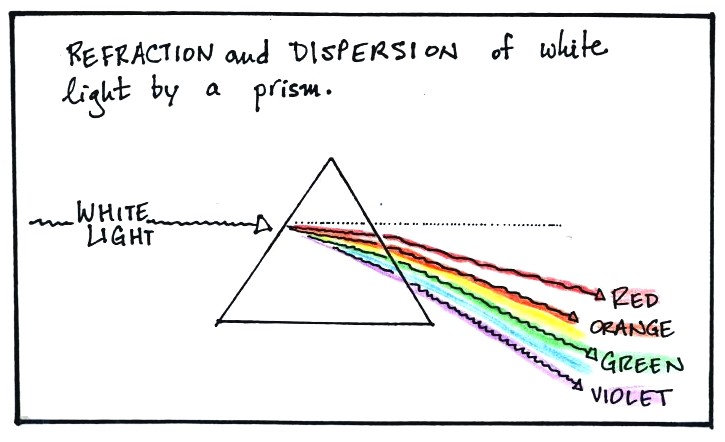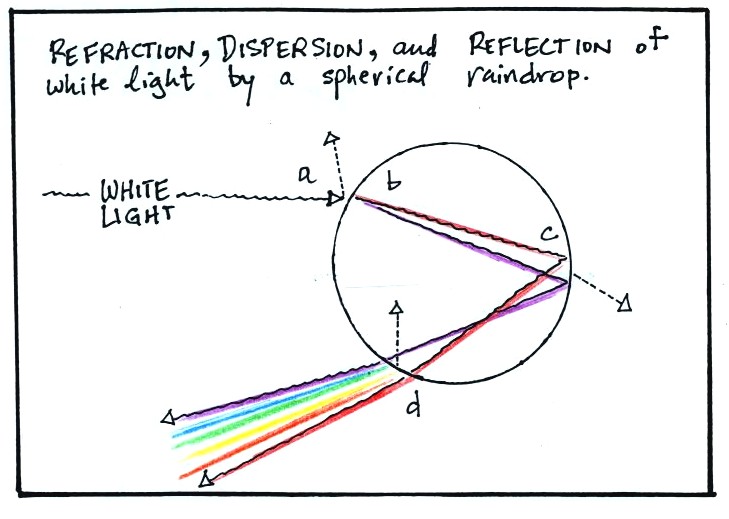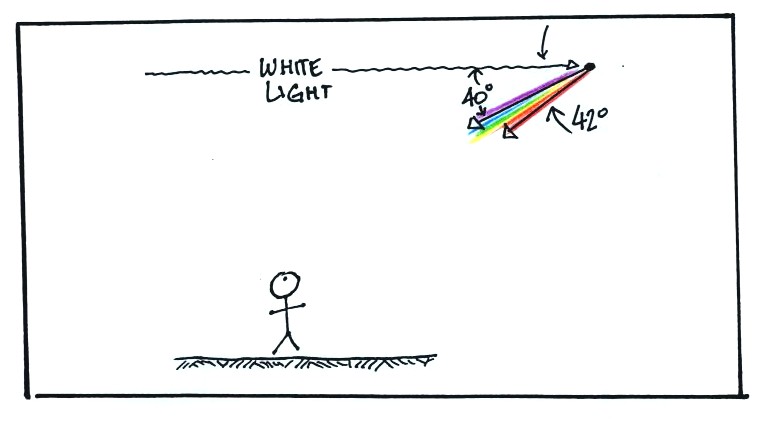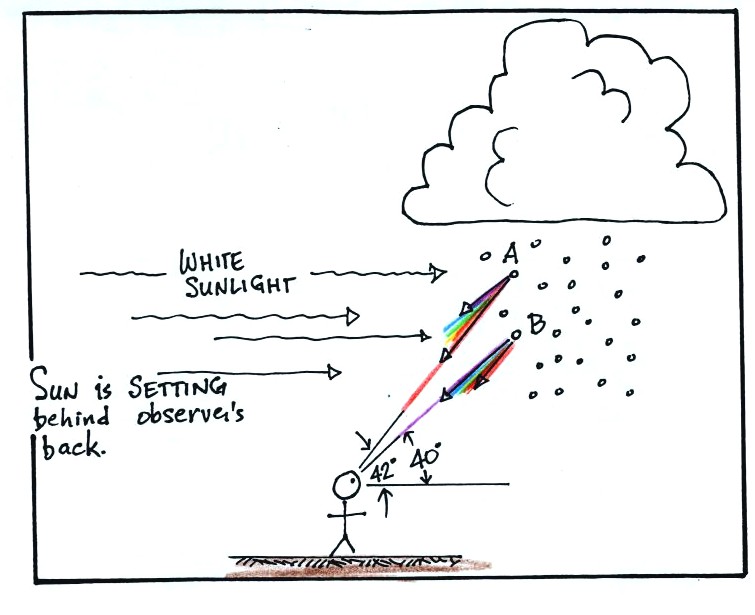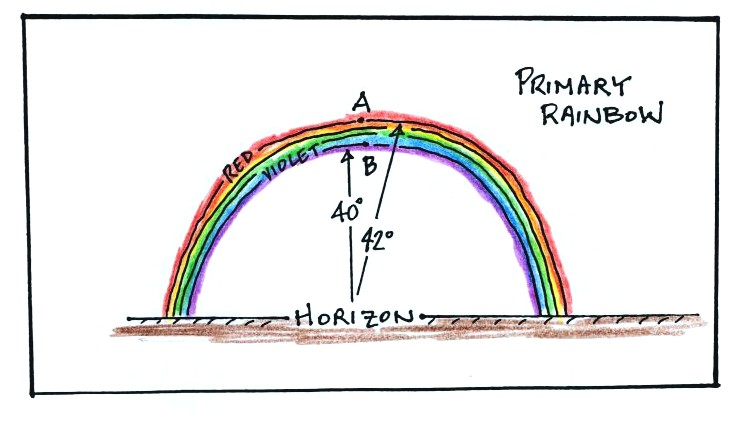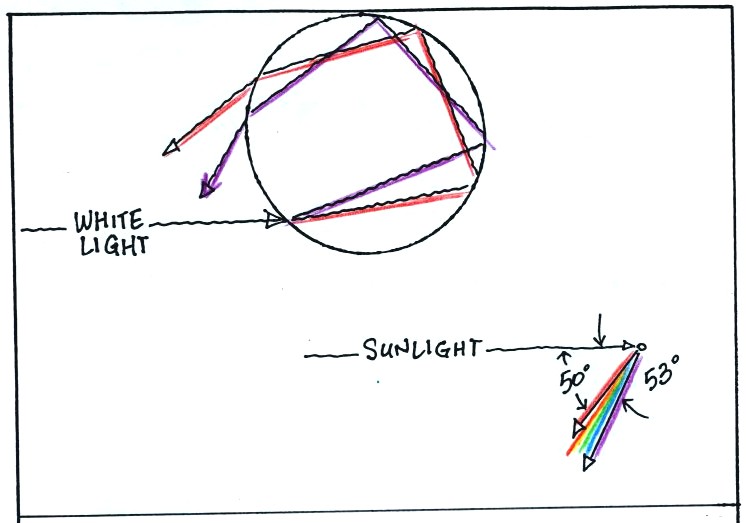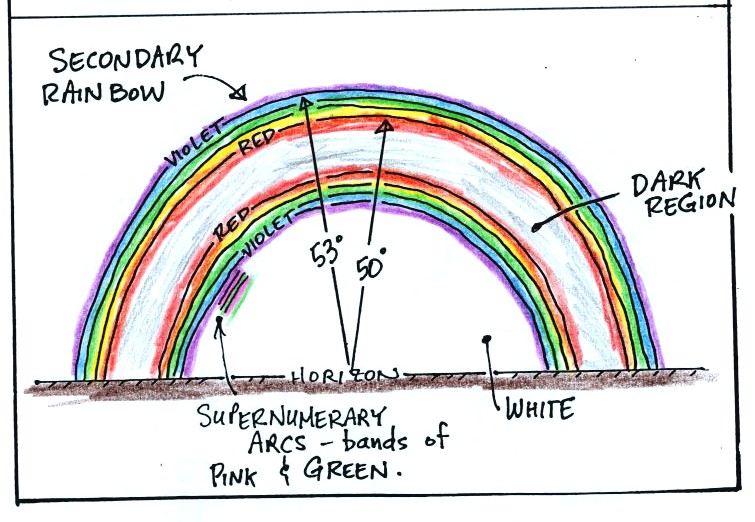Rainbows
The following figures can be found on pps. 109-112 in the photocopied
ClassNotes.
This first figure shows how white light can be split into its
component colors when it shines through a glass prism. The
bending that occurs when light passes from one transparent material
(air for example) into another (glass or water) is called refraction.
The amount of bending depends on the wavelength of light: shorter
wavelengths such as blue and violet are bent the most, longer
wavelengths like orange and red are bent the least. The
separation of white light into its colors by refraction is called dispersion.
The figure above shows a ray of white light striking a spherical
raindrop. Some of the white light is reflected (a). The remainder
(b) enters the raindrop. This light is bent (refracted) and split
into colors (dispersed). Some of the colored rays of light
reflect off the back inside surface of the raindrop (c). The
colored rays of light emerge from the drop (where they are bend and
dispersed some more) and head back, more or less, in the direction they
came from (d).
Someone down at the ground (standing with the sun at their back)
would see colored light coming from the raindrop. However because
each of the colors exits the drop at a slightly different angle (read
at 42o, violet at 40o, the other colors at angles
between 40o and 42o)
they would only see one of the rays from a given drop. They would
see the ray that was headed straight toward their eyes. The other
rays would either pass above the person's head or strike down near the
person's feet.
To see red light, the person on the ground would need to look 42o
above the horizon (A). To see violet light, the person would need
to look at a different raindrop, one that is lower in the sky and 40o
above the horizon (B). The person would see all the other colors
coming from drops between 40o and 42o above
the horizon.
Here's what the person on the ground would see. Red
light
would be visible on the outside edge of the primary rainblow.
Violet would be on the inside edge. The other colors would be in
between.
Sometimes
you'll see a faint secondary rainbow above the primary rainbow.
The following figure shows how this rainbow forms.
White light strikes the raindrop at a slightly different
position. The white light is again bent and separated into colors
but then is reflected twice inside the raindrop before emerging on the
front side of the drop. An observer on the ground would need to
look 53o above the horizon to see the violet light and 50o
to see the
red light.
Here are both the primary and the secondary
rainbow. The secondary rainbow is higher and dimmer than the
primary rainbow. The order of the colors in the secondary rainbow
is also reversed. Supernumerary arcs (faint bands of pink and
green) are sometimes visible below the primary rainbow (we won't go
into the cause of supernumerary arcs). Also the sky between the
two rainbows appears darker than the rest of the sky (we won't explain
that either)
